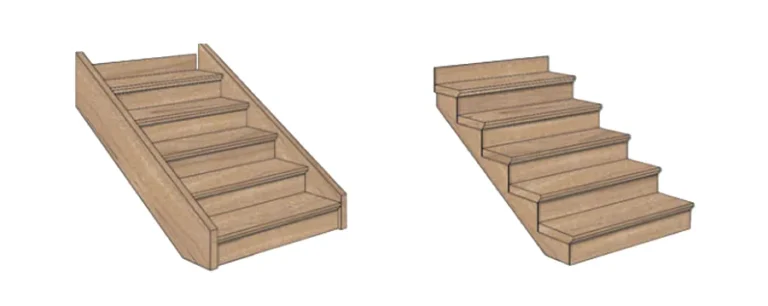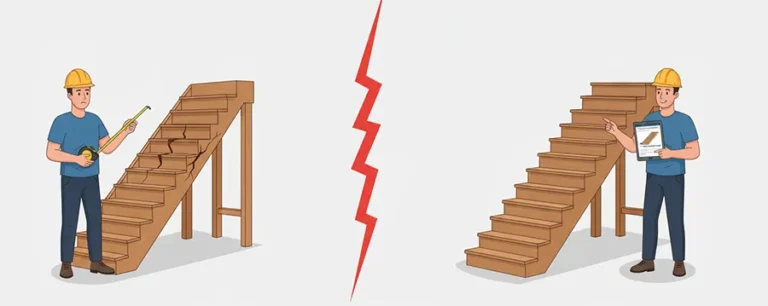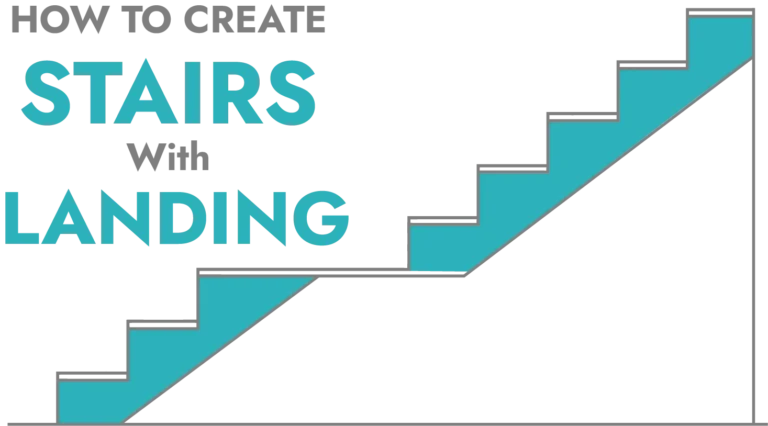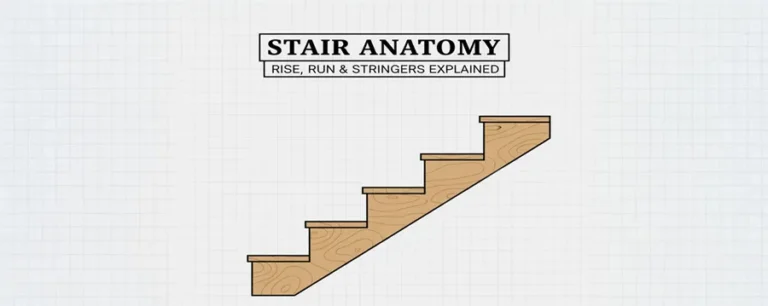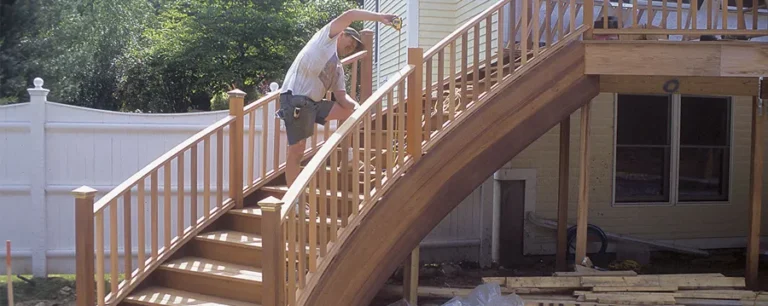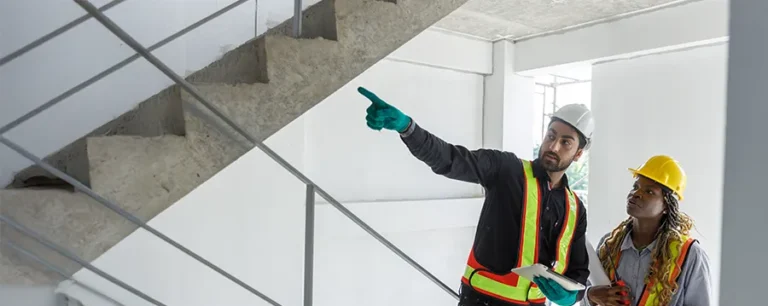Pre-Cut vs Custom Stair Stringers: Choosing Right Fit for Your Project
Introduction: Why the Right Stringer Choice Matters
Every stair system depends on its stringers for strength, alignment, and safety. Whether you are building deck stairs, interior stairs, or a multi-flight stair, choosing between pre-cut (prefabricated) stringers and custom-cut (site-measured) stringers directly affects cost, fit, labor, and finished quality. This guide explains the pros, cons, and technical considerations of both options, and helps you decide which suits your project best. It also shows how using a reliable stair calculator like The Stair Calculator can simplify your planning and verification process.
What Are Stair Stringers?
Stringers are the structural backbone boards that run along each side (or sometimes under) a staircase. They support the treads (horizontal steps) and risers (vertical faces) that you step on. Stringers carry the entire load of foot traffic and transfer it to the upper and lower supports.
There are several styles of stringers: cut (open) stringers, housed (closed or routed) stringers, or box stringers. The pattern of notches may be exposed (cut stringers) or concealed (housed). In this article, we compare two main production approaches: pre-cut (prefabricated) stringers versus custom-cut (site-measured) stringers.
Pre-Cut (Prefabricated) Stringers
Definition and How They Work
Pre-cut stringers arrive with the rise and run notches already made. They are usually produced in standard sizes, such as a 7-inch rise and 10-inch run. Some suppliers also offer semi-custom options based on your measurements, providing near-ready pieces that require minimal onsite adjustment. Many DIYers choose pre-cut stringers to save time and avoid the complexity of marking and cutting layouts manually.
Advantages of Pre-Cut Stringers
- Quick installation: No need for complex measuring or cutting onsite.
- Consistent accuracy: Factory precision ensures uniform rise and run dimensions.
- Lower risk of mistakes: Reduces the chances of cutting errors that could lead to uneven stairs.
- Less waste: Minimal trial and error, resulting in less material loss.
- Ideal for standard layouts: Works perfectly for projects with typical rise and run ratios.
Disadvantages of Pre-Cut Stringers
- Limited flexibility: Only fits certain stair dimensions and angles.
- Difficult to modify: Trimming or adjusting may compromise safety and uniformity.
- Not suitable for unique designs: Unusual site conditions may require full customization.
- Potential weakening: Over-notched sections can reduce strength.
- May cost more per unit: Although labor is saved, the material cost can be higher.
Custom-Cut (Site-Measured) Stringers
Definition and Process
Custom stringers are measured and cut to fit your exact stair layout. You calculate the total rise and run, determine the number of risers and treads, and then mark and cut the pattern on full-size boards. This method requires accurate measurements, carpentry skill, and careful execution, but it provides perfect alignment and maximum flexibility.
Advantages of Custom-Cut Stringers
- Perfect fit: Ideal for nonstandard or irregular stair layouts.
- Design flexibility: Suitable for curved stairs, landings, or winders.
- Stronger construction: Allows control over throat thickness and cut depth.
- Adaptable to site conditions: Accommodates uneven floors or slopes.
- Cost-effective for professionals: May reduce costs if you already have tools and expertise.
Disadvantages of Custom-Cut Stringers
- Requires skill: Errors in layout or cuts can cause serious misalignment.
- Time-consuming: Each stringer must be individually measured and verified.
- Greater chance of waste: Mistakes often lead to material loss.
- Onsite limitations: Large boards can be difficult to handle in small spaces.
Technical Considerations
Rise, Run, and Number of Steps
The total rise is the vertical distance between floors. The total run is the horizontal distance of the stair flight. Dividing the total rise by the number of risers gives the riser height, and dividing the total run by the number of treads gives the tread depth. Most building codes recommend a maximum riser height of around 7¾ inches and a minimum tread depth of 10 inches.
Throat Thickness and Structural Integrity
After cutting notches, a minimum of about 3½ inches of uncut wood (called the throat) should remain. Thinner throats can lead to failure under load, especially on longer stairs. Custom-cut stringers allow full control over this dimension, while pre-cut ones may have thinner residual thickness.
Uniformity and Code Compliance
Every stringer in a stair flight must match exactly so that treads and risers align. Variation in riser height should not exceed ⅜ inch between steps. Consistency ensures safety and comfort while climbing.
Attachment and Support
Top ends of stringers are secured to rim joists or ledgers, and bottom ends must rest on a firm base. Use metal hangers or brackets to prevent movement. Long spans often need mid-support to avoid sagging. For exterior stairs, always use pressure-treated lumber and corrosion-resistant fasteners.
Pre-Cut vs Custom-Cut Stringer Comparison
| Factor | Pre-Cut Stringers | Custom-Cut Stringers |
|---|---|---|
| Speed and Labor | Quick installation, minimal measuring | Slower, requires careful cutting onsite |
| Flexibility | Limited to standard dimensions | Fully adjustable for any layout |
| Precision | Factory-made consistency | Depends on the carpenter’s accuracy |
| Waste | Low material waste | Higher waste if errors occur |
| Design Complexity | Best for simple, straight runs | Best for winders, landings, and curves |
| Overall Cost | Higher per-unit cost, lower labor | Lower material cost, higher labor |
Which Option Should You Choose?
Choose pre-cut stringers if your stair geometry is standard, your time is limited, or you want an easy installation with consistent results.
Choose custom-cut stringers if you have unique site conditions, design variations, or prefer total control over dimensions. A professional carpenter or builder can ensure accuracy and compliance.
How a Stair Calculator Can Help
A stair calculator like thestaircalculator.com can automatically determine the correct rise, run, and number of steps for your project. It also checks code compliance, detects uneven risers, and helps visualize how your stairs will fit. Using this tool early in your design process prevents layout errors and simplifies both pre-cut and custom-cut planning.
Tips for Better Results
When Using Pre-Cut Stringers
- Verify factory specifications before purchase.
- Ensure that rise and run measurements match your total rise.
- Handle carefully during delivery to avoid cracks or warping.
- Use corrosion-resistant fasteners for outdoor applications.
When Cutting Custom Stringers
- Use a framing square and stair gauges for accurate marking.
- Cut the first stringer carefully and test fit before duplicating.
- Finish inner corners with a handsaw to avoid overcuts.
- Maintain consistent throat thickness across all stringers.
Safety and Maintenance
- Check riser heights for uniformity to prevent tripping.
- Inspect for cracks, rot, and loose fasteners regularly.
- Apply sealant or paint to protect against moisture.
- Replace damaged stringers immediately for safety.
Frequently Asked Questions
1. What is the main difference between pre-cut and custom-cut stringers?
Pre-cut stringers are made in factories using fixed rise and run dimensions, making them quick to install and ideal for standard layouts. Custom-cut stringers are measured and cut onsite to match your exact dimensions, offering better precision for unique or nonstandard stairs.
2. Are pre-cut stringers strong enough for outdoor decks?
Yes, they can be, as long as you use pressure-treated or weather-resistant lumber and install them according to local building codes. Always check the remaining wood thickness (throat) for strength and ensure proper support underneath.
3. How do I calculate the correct rise and run for stairs?
To find the right measurements, divide the total vertical height (rise) by the number of risers to get individual riser height, and divide the total horizontal distance (run) by the number of treads for tread depth. You can simplify this process using The Stair Calculator.
4. Can I modify pre-cut stringers if they do not fit perfectly?
You can trim the top or bottom slightly, but avoid cutting into the step pattern. Changing the step profile will alter riser heights, which can make the stairs unsafe and noncompliant with building codes.
5. What materials are best for long-lasting stair stringers?
For long-lasting stairs, choose durable materials like pressure-treated pine, Douglas fir, or laminated veneer lumber (LVL). For outdoor applications, seal the wood and provide proper drainage to prevent rot and warping.
Conclusion
Both pre-cut and custom-cut stringers have unique benefits. Pre-cut options save time and effort for standard designs, while custom-cut stringers deliver precision for unique layouts. The best approach depends on your site conditions, skill level, and project goals. Use The Stair Calculator to plan your dimensions, visualize outcomes, and ensure your stairs meet safety and comfort standards.

